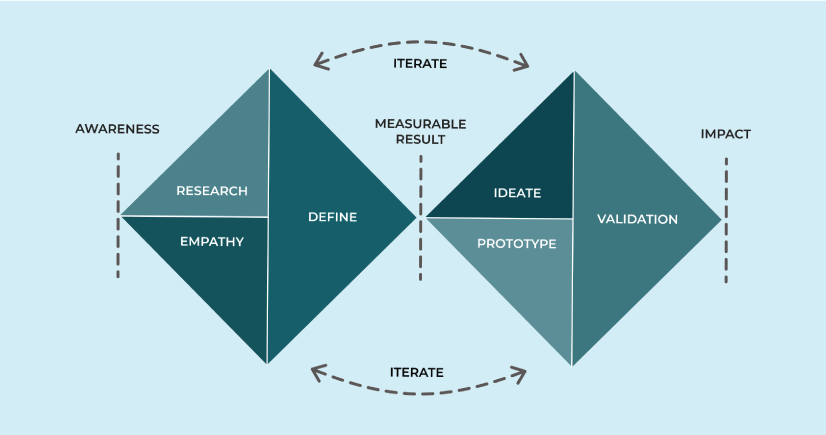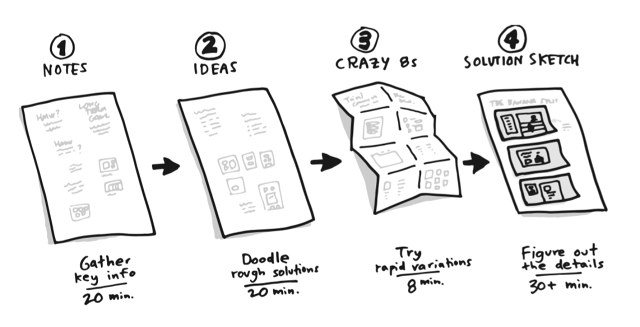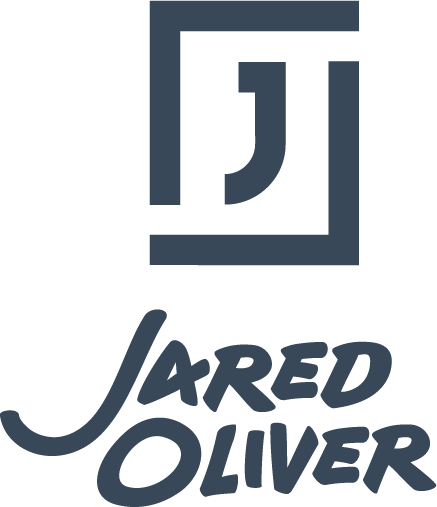From Chaos to Clarity
I use a mix of human-centered design approaches in my process. From Double Diamond to Design Thinking; and Design Sprints to Agile-Scrum these methods and frameworks to problem find and explore ideas holistically brings clarity, communication, and innovation to an otherwise chaotic effort to solve problems. For those interested, here's a quick summary of some of them.






A problem well-stated is half-solved.
Charles Kettering, the famed inventor and head of research for GM
Double Diamond
The double diamond consists of 4 Phases: Discover, Define, Develop, Deliver. As it's a framework, I work with teams to adapt it based on the needs of a product/project. Often iterating or restarting at various points, because we have new information or requirements change.
DISCOVER (Research Phase)
This phase helps us understand, rather than simply assume, what the problem is. It involves speaking to and spending time with people who are affected by the issues. It sometimes involves extensive research, both qualitative and quantitative including field studies, user interviews, focus groups, and observations.
This phase helps us understand, rather than simply assume, what the problem is. It involves speaking to and spending time with people who are affected by the issues. It sometimes involves extensive research, both qualitative and quantitative including field studies, user interviews, focus groups, and observations.
DEFINE (Synthesis Phase)
Here we make sense of the research and confirm whether we're solving the right problem. If needed, we redefine the challenge in a different way, resulting in a clear and actionable problem statement.
Here we make sense of the research and confirm whether we're solving the right problem. If needed, we redefine the challenge in a different way, resulting in a clear and actionable problem statement.
DEVELOP (Ideation Phase)
The second diamond encourages us to explore ways and means to solve the core issues, seeking inspiration from elsewhere and co-designing with a range of different people.
The second diamond encourages us to explore ways and means to solve the core issues, seeking inspiration from elsewhere and co-designing with a range of different people.
DELIVER (Implementation Phase)
Here I test out different solutions at small-scale, rejecting those that will not work and improving the ones that will. Often moving from wireframes to high fidelity mockup.
Here I test out different solutions at small-scale, rejecting those that will not work and improving the ones that will. Often moving from wireframes to high fidelity mockup.
Dan Nessler describes the double diamond as A framework (Not THE framework) and explains that everyone should be free to modify or adapt to the needs of the product or problem.
Consultants like IDEO, Luma institute, and AJ&Smart have organized various human-centered design methods into systems
Design Thinking
Where the double diamond is more linear and divided into clear stages, design thinking is sometimes be more fluid and iterative. When I apply design thinking with teams and clients, I'm employing various methods and exercises (like the 36 shown here). or those
This is THE HOW in practice to the steps of empathizing with users; defining their problems, ideating creative solutions, prototyping, and testing. Staying flexible, embracing feedback loops and adjusting the designs to better meet user needs.
Partnering closely with the product owner, scrum master, and developers throughout the project is paramount. Not only with regards to technical feasibility, but I've also seen many times, this team can serve as a driver for innovation.
Throughout each sprint, I take part in creating user stories, onboarding team-mates to navigating design files, provide way finding to reduce confusion, and UI inspections to keep design parity at the forefront of the product launch.
